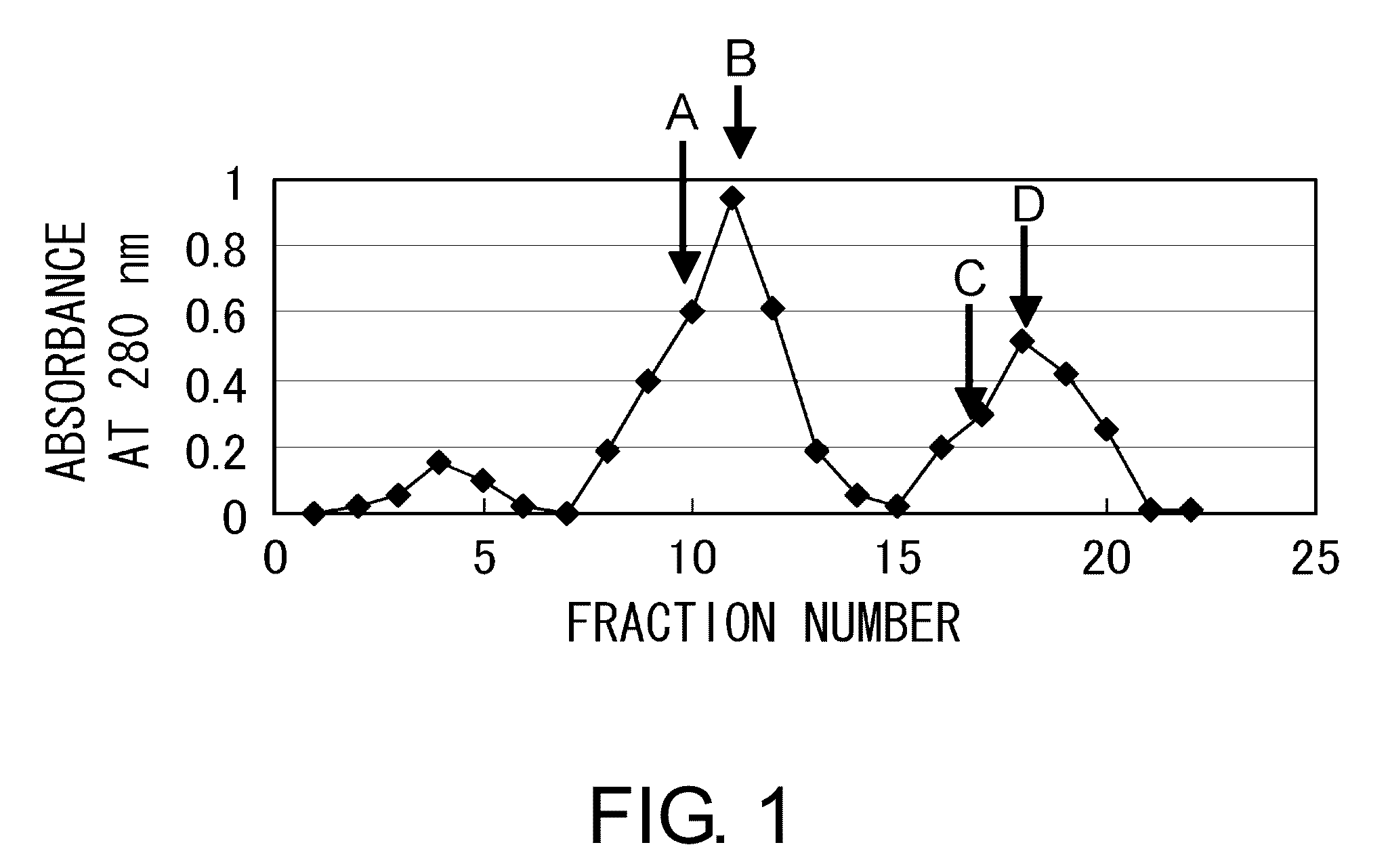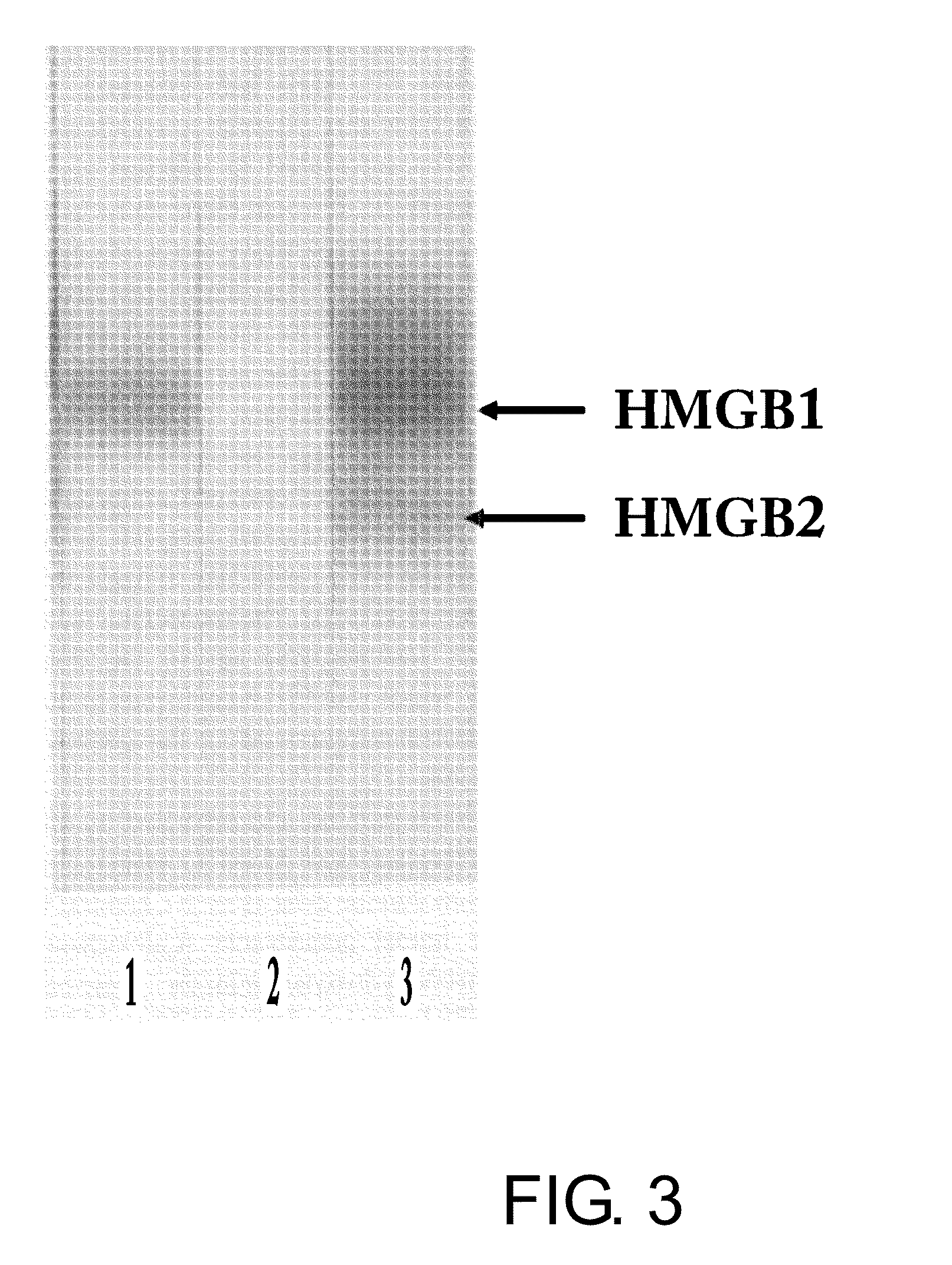Agent for Suppressing Rejection in Organ Transplantation Comprising Anti-HMGB-1 Antibody
a technology of organ transplantation and anti-hmgb-1, which is applied in the direction of immunodeficiency syndrome, drug composition, peptide, etc., can solve the problems of increasing the possibility of serious hypoglycemia, recurrent seizures and coma, and the inability to recommend whole pancreas transplantation for many diabetes patients, etc., to achieve the effect of suppressing the rejection and reducing the risk of serious hypoglycemia
- Summary
- Abstract
- Description
- Claims
- Application Information
AI Technical Summary
Benefits of technology
Problems solved by technology
Method used
Image
Examples
example 1
Selection of Highly Hydrophilic Amino Acid Sequences in the Amino Acid Sequence of Human HMGB-1, which Exhibit Low Homology to Human HMGB-2
[0110]Highly hydrophilic amino acid sequences that exhibit low homology to human HMGB-2 were selected from the amino acid sequence of human HMGB-1.
(1) The amino acid sequence of human HMGB-1 (SEQ ID NO: 6) is shown above as the data of Wen et al. (Wen et al., Nucleic Acids Res. (1989) 17: 1197-214).
(2) The hydrophilicity of each amino acid residue in the amino acid sequence of human HMGB-1 was estimated by the method of Hopp et al. (T. P., Hopp et al., Proc. Natl. Acad. Sci. USA (1981) 78: 3824-8).
(3) Next, highly hydrophilic amino acid sequences from the amino acid sequence of human HMGB-1 were compared with the amino acid sequence of human HMGB-2 (M. Yoshida et al., J. Biol. Chem. (1992) 267: 6641-5). Then, some amino acid sequences exhibiting low homology to human HMGB-2 were selected from the highly hydrophilic amino acid sequences of human H...
example 2
Peptide Synthesis
[0111]The peptide consisting of the amino acid sequence “Cys Lys Pro Asp Ala Ala Lys Lys Gly Val Val Lys Ala Glu Lys” (SEQ ID NO: 3), which has an extra cysteine at the N-terminus of the amino acid sequence selected in Example 1, was synthesized for the convenience of linking
[0112]First, the peptide having the amino acid sequence “Cys Lys Pro Asp Ala Ala Lys Lys Gly Val Val Lys Ala Glu Lys” (SEQ ID NO: 3) was synthesized by the solid-phase synthesis method with t-butoxycarbonyl amino acids using the Applied Biosystems Model 430A peptide synthesizer according to the instruction manual. The synthesized peptide was cleaved from the resins by the hydrogen fluoride method in the presence of dimethylsulfide, p-thiocresol, m-cresol, and anisole as scavengers to suppress the side reactions. Then, the scavengers were extracted with dimethyl ether, and the synthesized peptide was extracted with 2N acetic acid. The peptide was purified by anion exchange column chromatography u...
example 3
Immunogen Preparation
[0114]10 mg of a carrier, namely keyhole limpet hemocyanin (KLH) (Calbiochem) or bovine serum albumin (BSA) (Seikagaku Co.), was dissolved in 10 mM potassium dihydrogen phosphate-dipotassium hydrogen phosphate buffer (pH 7.0), and then 150 μl of N,N-dimethylformamide solution containing 2.5% maleimidebenzoyl N-hydroxysuccinimide ester (MBS) (PIERCE) was added thereto. The mixture was incubated at room temperature for 30 minutes while stirring.
[0115]The mixture was loaded at 4° C. onto a gel filtration column (Sephadex G-25 column (Pharmacia LKB)) pre-equilibrated with 10 mM potassium dihydrogen phosphate-dipotassium hydrogen phosphate buffer (pH 7.0). The absorbance was monitored at 280 nm to collect the MBS-carrier conjugate fraction. The pH of the MBS-carrier conjugate fraction was adjusted to 7.0 using trisodium phosphate. The peptide “Cys Lys Pro Asp Ala Ala Lys Lys Gly Val Val Lys Ala Glu Lys” (SEQ ID NO: 3) synthesized as described in Example 2 was added t...
PUM
| Property | Measurement | Unit |
|---|---|---|
| time course | aaaaa | aaaaa |
| flow rate | aaaaa | aaaaa |
| flow rate | aaaaa | aaaaa |
Abstract
Description
Claims
Application Information
 Login to View More
Login to View More - R&D
- Intellectual Property
- Life Sciences
- Materials
- Tech Scout
- Unparalleled Data Quality
- Higher Quality Content
- 60% Fewer Hallucinations
Browse by: Latest US Patents, China's latest patents, Technical Efficacy Thesaurus, Application Domain, Technology Topic, Popular Technical Reports.
© 2025 PatSnap. All rights reserved.Legal|Privacy policy|Modern Slavery Act Transparency Statement|Sitemap|About US| Contact US: help@patsnap.com



